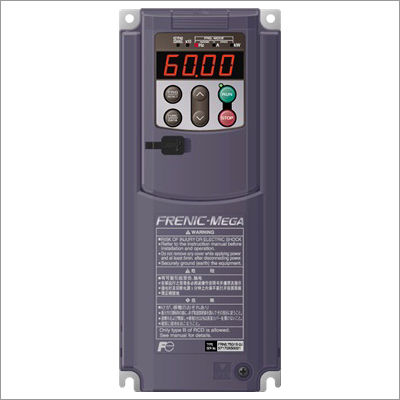
Low Voltage AC Drives
15000 INR/Piece
Product Details:
- Application Industrial
- Protection Level IP20
- Frequency (MHz) 50-60 Hertz (HZ)
- Color White
- Warranty 1 Year
- Click to view more
X
Low Voltage AC Drives Price And Quantity
- 15000 INR/Piece
- 1 , , Piece
Low Voltage AC Drives Product Specifications
- 1 Year
- 50-60 Hertz (HZ)
- White
- IP20
- Industrial
Low Voltage AC Drives Trade Information
- 100 , , Piece Per Week
- 1-6 Week
Product Description
Irrespective of the benefits medium voltage AC drives give for high horsepower motors, low voltage AC drive still holds a dominant position in the domain of AC drive. These are suitable for both, low-power and high-power applications. This is because of many reasons, including cost and availability. Medium voltage drives being custom engineered solutions, result in low-volume production, long lead time as well as higher cost, compared to low voltage drives. The manufacturers even have introduced more standard medium voltage drive options, as well as bought advances in high-voltage semiconductor technology which lowered the cost of electronics, still they are significantly more expensive and less readily available compared to low voltage drives.
The advantage of Medium voltage drives is that they draw less current than low voltage drives for the same power output. This allows energy savings and use of smaller, lower-cost cables. But still the medium voltage drives are mostly custom-engineered products while low voltage drives are available as standard products.
The Low voltage (LV) drives can be classified into voltage source inverter (VSI) or current source inverter (CSI). VSI type is type with pulse-width-modulation (PWM) is the most common. VSI-PWM drives makes use of insulated-gate bipolar transistor (IGBT) switching devices in their inverter section. IGBTs with their high switching frequency allows minimization of harmonics and reduction in motor heating. As said everything has its advantages and disadvantages, this high switching frequency also results in a higher rate of voltage rise (dV/dt), which ultimately causes reflected waves that can result in motor insulation and cables damage. Output reactors or filters can be used for reducing the reflected waves, but they add cost to the drive system.
Even though low voltage drives operate at low voltage, they often are used with medium voltage motors, rated at 2300 or 4160 V. A step-up transformer is added to the drive in this case, in order to increase the inverter output voltage to match the motor voltage.
In situations that require high starting torque (typically above 150 percent), the low voltage PWM drive can be altered to use flux vector control. Also called field oriented control (FOC), this method gives independent control of the magnetizing and torque-producing components of the stator current, allowing more consistent torque output.
As said earlier, low voltage drives gives a solution for low-power as well as high-power applications. Though medium voltage drives provide the advantage of lower energy use and less current draw, still low voltage drives are often chosen for their relatively smaller size, easy availability and lower cost.
The advantage of Medium voltage drives is that they draw less current than low voltage drives for the same power output. This allows energy savings and use of smaller, lower-cost cables. But still the medium voltage drives are mostly custom-engineered products while low voltage drives are available as standard products.
The Low voltage (LV) drives can be classified into voltage source inverter (VSI) or current source inverter (CSI). VSI type is type with pulse-width-modulation (PWM) is the most common. VSI-PWM drives makes use of insulated-gate bipolar transistor (IGBT) switching devices in their inverter section. IGBTs with their high switching frequency allows minimization of harmonics and reduction in motor heating. As said everything has its advantages and disadvantages, this high switching frequency also results in a higher rate of voltage rise (dV/dt), which ultimately causes reflected waves that can result in motor insulation and cables damage. Output reactors or filters can be used for reducing the reflected waves, but they add cost to the drive system.
Even though low voltage drives operate at low voltage, they often are used with medium voltage motors, rated at 2300 or 4160 V. A step-up transformer is added to the drive in this case, in order to increase the inverter output voltage to match the motor voltage.
In situations that require high starting torque (typically above 150 percent), the low voltage PWM drive can be altered to use flux vector control. Also called field oriented control (FOC), this method gives independent control of the magnetizing and torque-producing components of the stator current, allowing more consistent torque output.
As said earlier, low voltage drives gives a solution for low-power as well as high-power applications. Though medium voltage drives provide the advantage of lower energy use and less current draw, still low voltage drives are often chosen for their relatively smaller size, easy availability and lower cost.
Tell us about your requirement

Price:
Quantity
Select Unit
- 50
- 100
- 200
- 250
- 500
- 1000+
Additional detail
Mobile number
Email






 Call Me Free
Call Me Free
